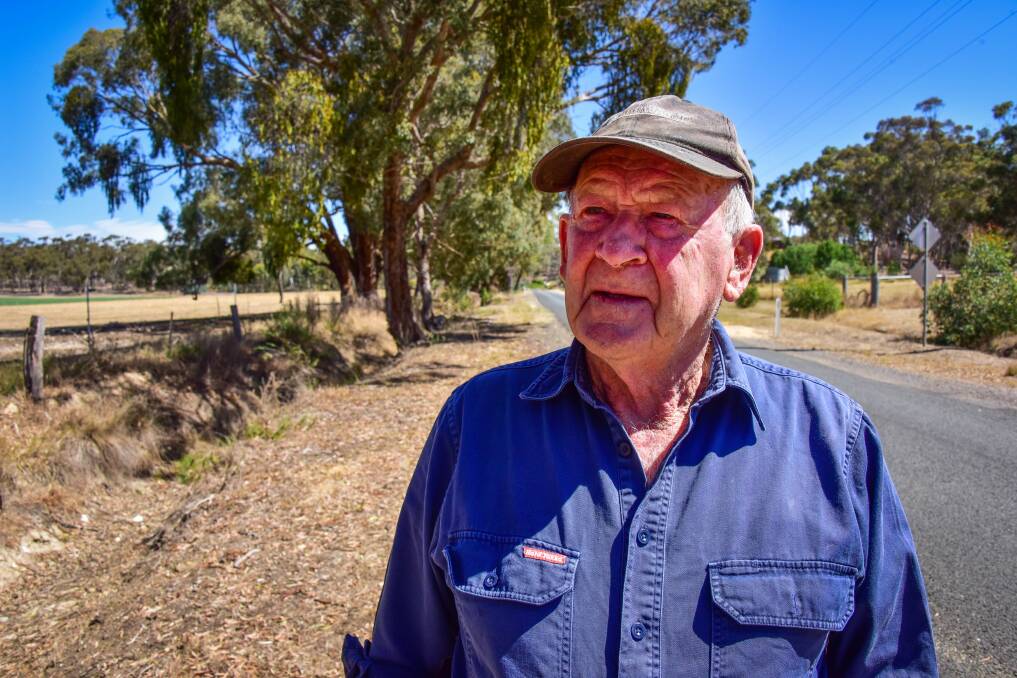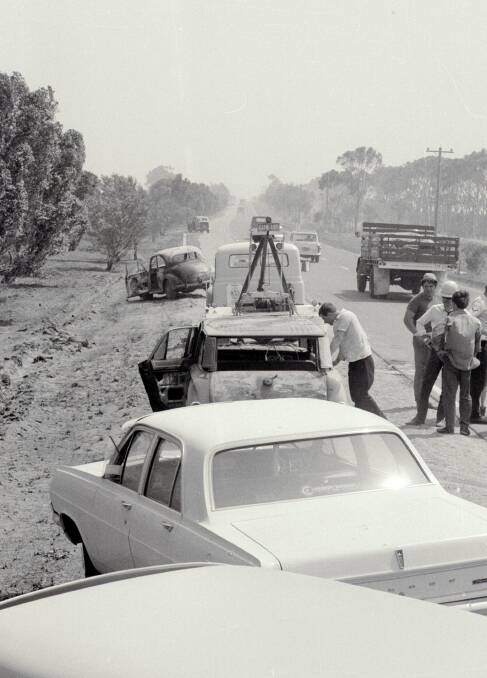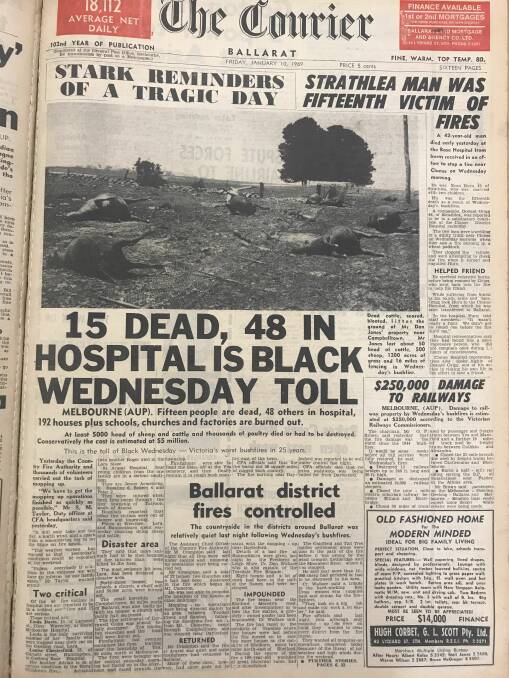It was blistering, windy weather on the first total fire ban day of the year.
Subscribe now for unlimited access.
or signup to continue reading

Despite a hot and dry summer, the weather on January 8, 1969, took the state by surprise, with the harrowing events of that day searing their way into the nation’s history books.
At 9am, the mercury had reached 40 degrees and blustery gale force winds of 40 kilometres per hour had hit Central Victoria.
January 8 was the 50th anniversary of that day, when 230 fires broke out across the state, 21 of them serious, to disastrous consequences; 23 people were killed, including two Country Fire Authority volunteers, while hundreds of others were injured.
The fires scorched 250,000 hectares of land, killing thousands of stock animals and destroying more than 200 houses.

Daylesford fire
One serious fire burned in the Daylesford region.
The fire began at Mt Cameron, north of Clunes, after a power pole was brought down by the damaging winds, igniting surrounding grass.
Yandoit’s Don Morrison was the district president of the Rural Fire Brigade’s Association that year. He said volunteers from all over District 15 rushed to fight the blaze.
The fire was almost controlled by mid-morning but with increasing wind behind it, the fire blazed back out of control, sweeping across to the small township of Campbelltown, almost incinerating it completely.
The Anglican church, ten houses and community hall were destroyed.
Two men were seriously injured when they stopped their car next to a wheat paddock near Clunes before the wind changed, engulfing them in flames.
One of the men, Evan (known as Jim) Hurn, of Strathlea, later died of his extensive injuries at Ballarat Base Hospital.
Mr Morrison, now 87, said the fire had almost reached Daylesford by late afternoon, but the wind changed, causing the fire to burn back across its initially destructive path.
He said some volunteers didn’t sleep for days in their efforts to protect their communities, though a number of buildings, including hay sheds and homes, were lost in the region.

“Something like this stays in your mind for the rest of your life,” Mr Morrison said.
The fire burnt through Franklinford, across to Shepherd’s Flat and up Mt Franklin, with the fire spotter lucky to escape as the flames started licking at its base. Communications were lost, making it difficult to fight the aggressive blaze, with telegraph poles burnt to ash.
“There were lots of narrow escapes that day,” he said. “It was a prodigious effort to get on top of it and then to repair the damage afterwards.”
The region didn’t have rain for six weeks afterwards.
“It meant every burning ember, log and stump had to be extinguished because ghosts kept starting up again. An enormous amount of manpower went into it,” Mr Morrison said.
Mr Morrison has been a member of the CFA for more than 70 years and has seen many changes during this time.
He said the introduction of air support was a very important part in extinguishing current day bushfires quickly.
Lara fire
Elsewhere on January 8, a devastating fire claimed lives at Lara, near Geelong. The fire started at Wooloomanata, at a grazing property near the You Yangs, where it burned through 800 acres of wheat. High winds accelerated the rate of the fire burning across the landscape before it split in two directions, with one racing towards Lara Lake and the other towards the township, where a school and church were destroyed.
According to the CFA, the fires, which burned from the You Yangs to Corio Bay, travelled up to 11 kilometres per hour as a result of the 119 kilometre winds, combined with low humidity.
The most significant deaths of that day occurred as a result of these fires, with 18 people losing their lives. Tragically, the majority of the deaths occurred on the Princes Highway, at Little Creek Bridge, where people were forced to stop their vehicles due to thick, grey smoke, and were subsequently trapped as flames leaped over the four lanes.

Many people panicked and abandoned their cars to escape on foot, but the dense smoke proved deadly.
Despite the horror, that day also saw miraculous survivals, with one case two brothers, sheltering in their car as the fire smoldered around them, surviving.The CFA says it was the first time evidence suggested it is safer to remain in a vehicle when surrounded by bushfire, despite instincts to flee. This advice is still used today.

